|
THE STRAIGHTJACKET
|
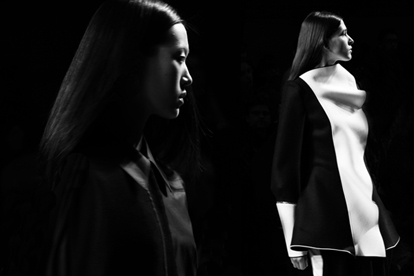
|
|
photos by Ricardo Gomes design by Aganovich
|
The minimalism that is currently sweeping the catwalks is trickling down from diehard purists like Francisco Costa at Calvin Klein, Raf Simons at Jil Sander, Phoebe Philo at Celine and Rick Owens for Rick Owens, to inspire other brands to introduce more abstract and less decorative clothes.
We can see the image of fashion cleaning up with stricter lines and linear volumes, a silhouette that is very easy to adopt by young working women and mothers. It is a fashion that seems to be demographic design more than fashion design, born out of necessity in a difficult economy.
However the abstraction in clothing seems to also echo a need in art and autonomous design to move away from the power of narration and illustration that has governed our culture during the turn of the century. Therefore, avant-garde designers are pushing ahead with the pure consideration of form in its own right, disregarding the body, encasing the torso in a tight, bold piece of heavier fabric or leather, restricting movements by its rigor.
When done in winter-white stiff felts and wovens, I cannot help but compare these new garments to the straight jackets used to contain the patients at psychiatric institutions; an item that has often attracted artists and designers. With its restrictive shape, keeping the head high atop a stovepipe cowl, its very long sleeves restraining hands from action, and its tight, sometimes asymmetric fit, these very new garments seem to impose motionless and spiritual activities. Today’s tabards with puritan pelerines and straight jackets with hoods and cowls are going to be highly influential within the minimal current, seeing many adaptations in the future; in softer and less severe fabrications such as compact jerseys, fleece and knitted luxury fibres – because consumers are not as mad as re-modernism wants them to be.
Lidewij Edelkoort
|
|
|
|
|
TAKING SHELTER
|
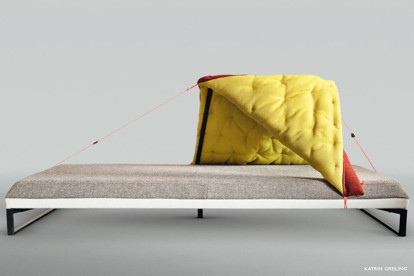
|
|
photo courtesy of katrin greiling
|
|
One of the highlight at the Salone in Milan this year is the nomadic current influencing lifestyle, ignited by people’s free and wireless existence, but also nourished by the revival of outdoor sports, utilitarian fashions and luxury camping.
Katrin Greiling’s daybed that uses a quilt for shelter was shown at Kvadrat; the Danish weaver invited contemporary designers to celebrate their most famous textile, ‘Hallingdal 65’ by Nanna Ditzel.Also featured were Marti Guixé who buffered his sofa with upholstered walls, Jonah Takagi who created a canapé over a daybed, and Mermelada Studio who made a funky textile tepee.
At Wallpaper’s ‘Handmade’ exhibition, Louis Vuitton stayed true to its travel roots, unveiling a luxurious tent fit for the most elegant of nomads.
Discover more on Trendtablet
|
|
|
|
|
DARK KNIGHTS OF HUMANITY SALVATION
|
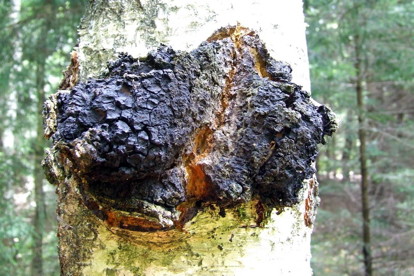
|
|
photo by Tomas Čekanavičius
|
|
Mushrooms have amply made their way in our plates for the last few years, but it seems that we have yet even started to scratch the surface of all they can do for us.
The Chaga fungus, Inonotus Obliquus, is a pore mushroom that grows on birch, alder and beech trees in colder climates, and digest botulinic acid from the tree sap. Botulin is a substance that once absorbed orally efficiently treats stomach, lung and esophagus cancers; the parasite breaks the substance down to a form that is digestible by the human organism. Also loaded in antioxidants it boosts the immune system, stimulates the central nervous and endocrine systems of organism, improves metabolism of cerebral tissue, regulate cardiovascular and respiratory activity. A superfood that shamans in Siberia would eat on a daily basis.
Pestalotiopsis microspore, a fungi that has been recently spotted in the Ecuadorian rainforest by Yale’s molecular biochemist Scott Strobel and his group of students. This fungus can feed off polyurethane only, and in anaerobic conditions (oxygen-free), which makes is the perfect cleaner for the bottom of landfills.
In the same vein, we can hire now the power of fungi and microorganisms that will feed on oil, dioxin and petroleum products, allowing the cleansing of polluted natural places on which nothing can grow anymore. And then there is Radiotrofic fungus, a black mold grows in the Chernobyl reactors and feeds off.
The process of harnessing these natural components to help us get rid of the bad stuff, cancer, plastic waste and spilled oil or even radioactive substances, is called bioremediation. Of course, bioremediation is not an excuse to keep indulging into our addictions to plastic and oil consumption, or development of more nuclear plants to make up for our increasing need for power; but it is an environmentally-friendly process.
Interesting to note that these evil-fighting fungi actually walk the talk: they all look dark.
Emmanuelle Linard
Chaga Fungus
Pestalotiopsis
Fungi that feed on oil
|
|
|
|
|
ON THE ROAD TO ROOD
|
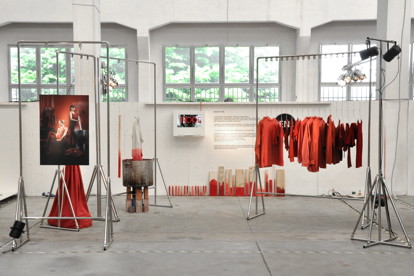
|
|
photo courtesy of rood
|
|
As spotted at Ventura Lambrate during Salone del Mobile 2012, ROOD by rENs is a new collection of red-dyed garments by the Dutch designer Renée Mennen.
The pieces are vat dyed in different reds that range from cadmium to red apple, oxblood, vermillion, violet and cherry; federating the collection into one family by the sheer fact that the pieces are all red ("rood" in Dutch). Sold across Europe in hip fashion outlets, what's particularly interesting about this colour-conscious brand is that the identity of the pieces can be also tracked on a customized website.
Philip Fimmano
More
Trailer
|
|
|
|
|
COLOUR PORCELAIN
|
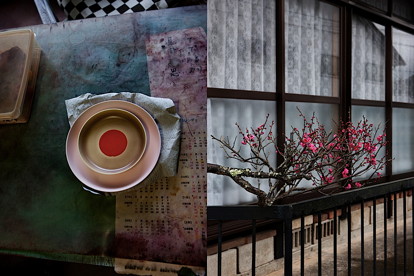
|
|
photos by inga powilleit
|
|
At the request of 1616 / Arita, one of the oldest Japanese porcelain manufacturers, Scholten & Baijings has designed a very comprehensive porcelain service that was launched at Spazio Rossana Orlandi during the 2012 Salone del Mobile. The collection consists of three series: Minimal, Colourful and Extraordinary.
The distinctive Japanese Arita porcelain is renowned for its superb quality, where fine hand-painted decorations play a central role. The tradition of porcelain painting dates back to 1616, when the abducted Korean potter Yi Sam-Sam-Pyeong discovered a superior quality clay in Arita. For the collection of 1616 / Arita, Scholten & Baijings prepared a colour analysis involving historical masterpieces. Typical Japanese colours, such as aquarelle blue, light green, red-orange and yellow ochre, were the ones that played a prominent role. These colours have been used individually in the new designs, but together they form the specific Arita colour spectrum.
The results are layered colour compositions, executed in different shades of glaze, in combination with the natural porcelain colour. The latter has a special delicate grey-white hue, which makes it unique in the world.The names of the series refer to the amount of colour, details and patterns used. 'Colour Porcelain - Extraordinary’ is the most elaborately finished version.
By applying the compositions to an extremely functional service, an interesting dialogue has been created between applied art and everyday use. The combination of this traditional craftsmanship and Scholten & Baijings’ recognizable signature style has resulted in a unique mix of Asian and European culture.
Discover more on Trendtablet
|
|
|
|
|
|
|
|
|
EXHIBITION
|

|
MADAME GRÈS
This autumn, the MOMU Antwerpen will be hosting an exhibition on the work of Madame Grès. It is the first retrospective of the work of this Parisian designer (1903-1993). The Museum will showcase contemporary pieces by such designers as Azzedine Alaïa, Yohji Yamamoto and many others, in dialogue with the silhouettes of Madame Grès.
More
|
|
|
BOOK
|
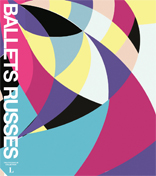
|
|
Ballet Russes: The Stockholm collection
During 20 years of time, from 1909-1929, the Russian Ballet in Paris took the world by storm. The dancers and contributing artists were stars. Later on, fashion designers like Yves Saint Laurent, Jean Paul Gaultier and Mulberry sought inspiration in their extravagant performances which were an explosion of colour, exoticsm and sensuality. This book contains many illustrations and was published conjunction of the exhibition held at the Museum for Performing Arts and Visual Arts in Stockholm, 2009.
Shop
|
|
|
EXHIBITION
|
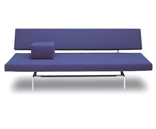
|
Martin Visser
Martin Visser, renowned furniture designer and driving force behind the Visser collection, purchased his first work from Karel Appel in 1948.
Over the course of thirty years, Martin and his first wife Mia and brother Geertjan Visser acquired many works by now established names of the neo-avant-garde. Bonnefantenmuseum Maastricht.
More
|
|
|
MORE TRENDS
|
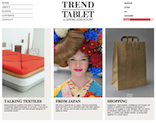
|
TREND TABLET
trendtablet.com explains how trends grow, evolve and flow, and helps us better understand and perceive how they interact in our daily lives.
this tool accessed for free is open to comments and new ideas, please contribute and be part of our network .Enjoy!
More
|
|
|
JOIN US
|
|
|
|
BOOK
|
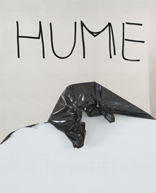
|
|
A Cat on a Lap
The work of renowned painter and sculptor Gary Hume is characterized by his invigorating combinations of coloured gloss. In his first major monograph the artist’s rich, affecting work is granted new life in over 200 full-colour illustrations. Using imagery as diverse as polar bears, snowmen and supermodels, Hume turns ephemera into portraits and abstract landscapes – the paintings are simplistic yet engaging and blend a charming naivety with a highly sophisticated grasp of the colour wheel, all of which cements Hume’s position as one of Britain’s most celebrated contemporary artists.
Shop
|
|
|
MAGAZINE
|
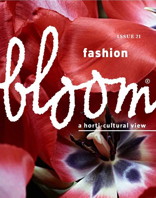
|
Bloom
Over the last few seasons we have seen flowers starting to bloom on textiles, experimental plants invading dresses and witnessed leaves whirling onto scarves.Therefore, we have created a magazine that is much like a bazaar, containing all the types of fashion that flowers have to offer, exploring their influences to the fullest.
Shop
|
|
|
|
CATALOGUE
|
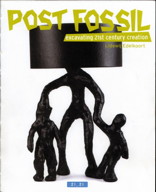
|
Post Fossil
Post Fossil. Excavating 21st century creation. This catalogue was printed on the occasion of the exhibition in Tokyo.
Shop
|
|
|
